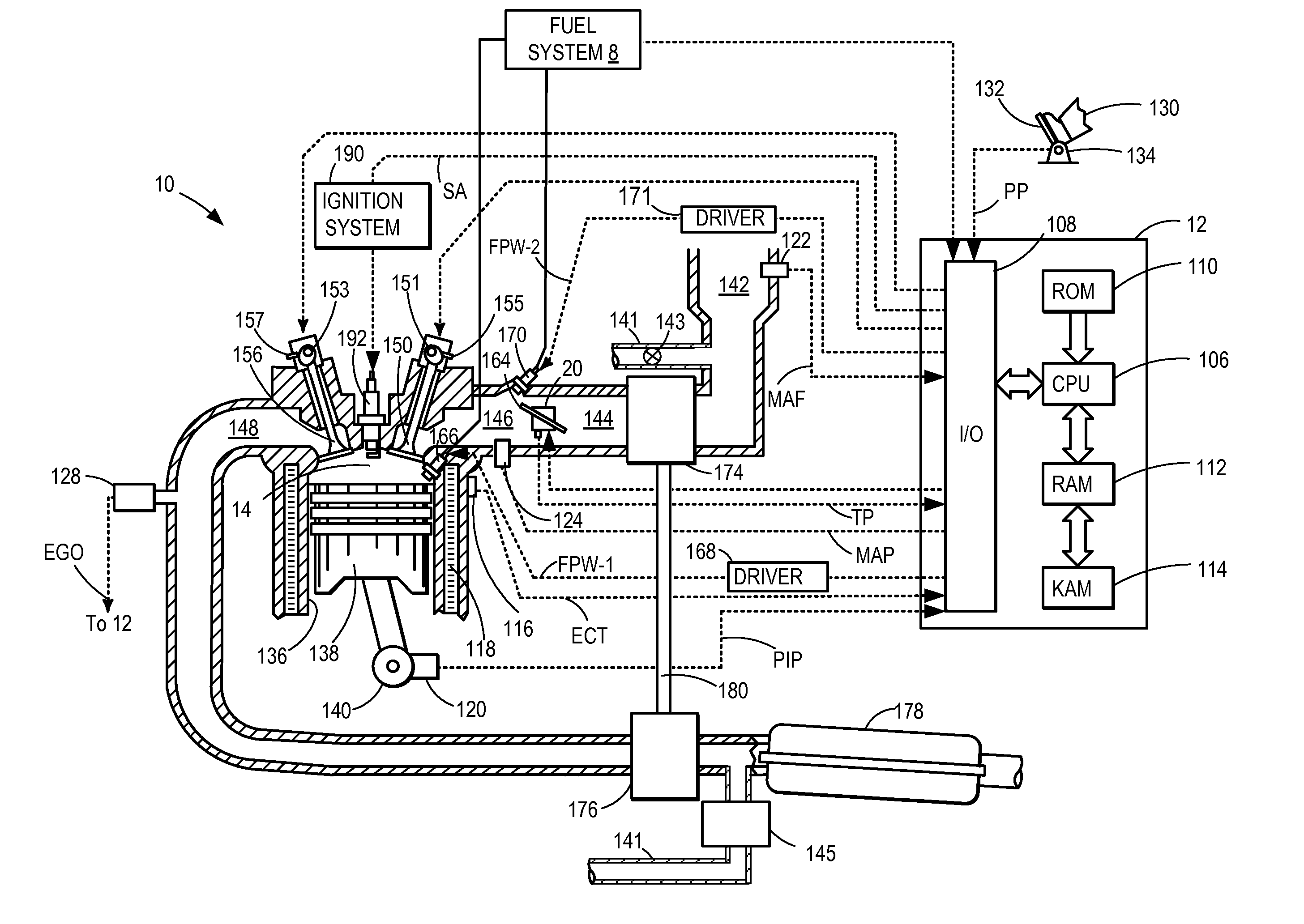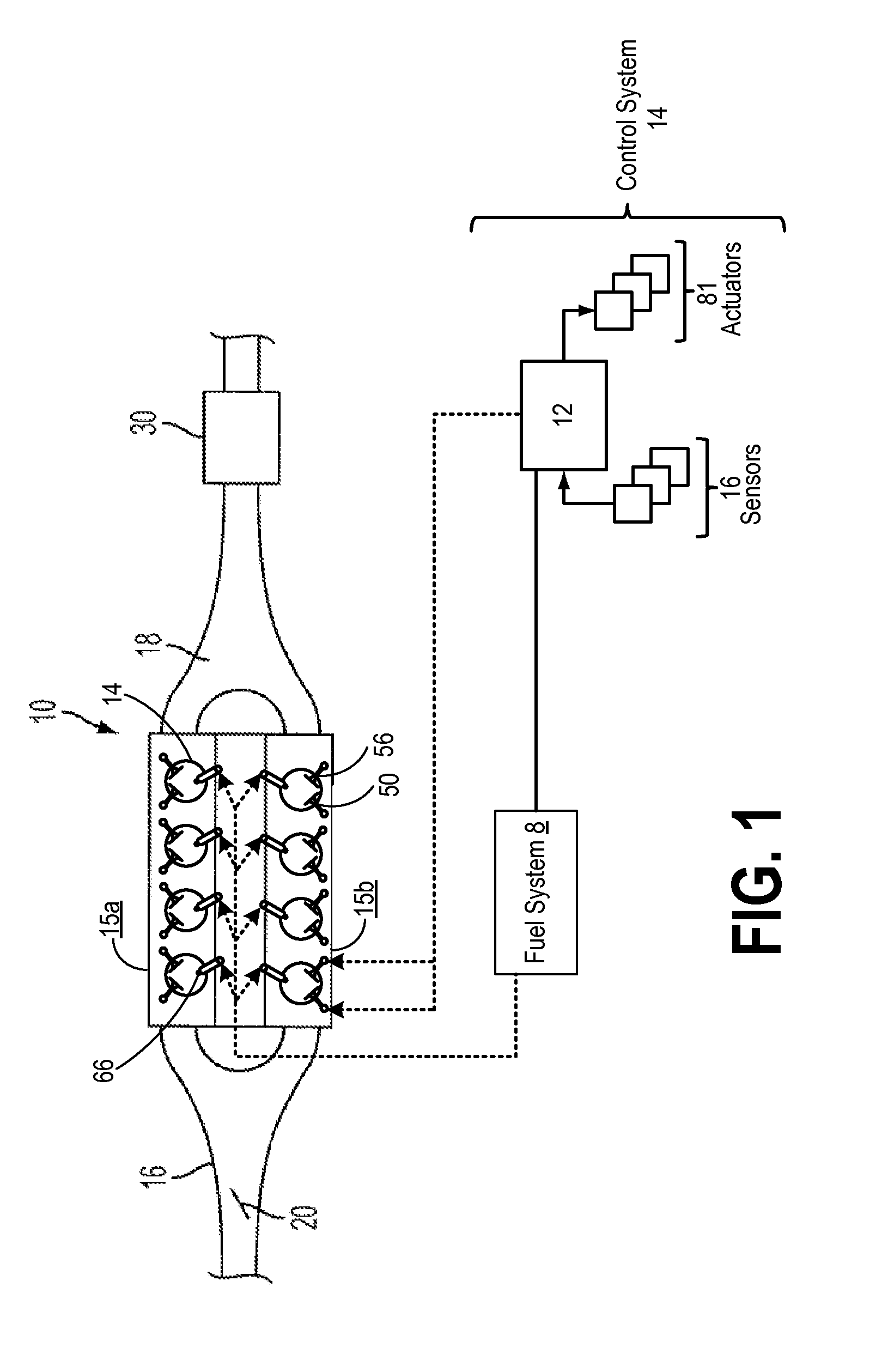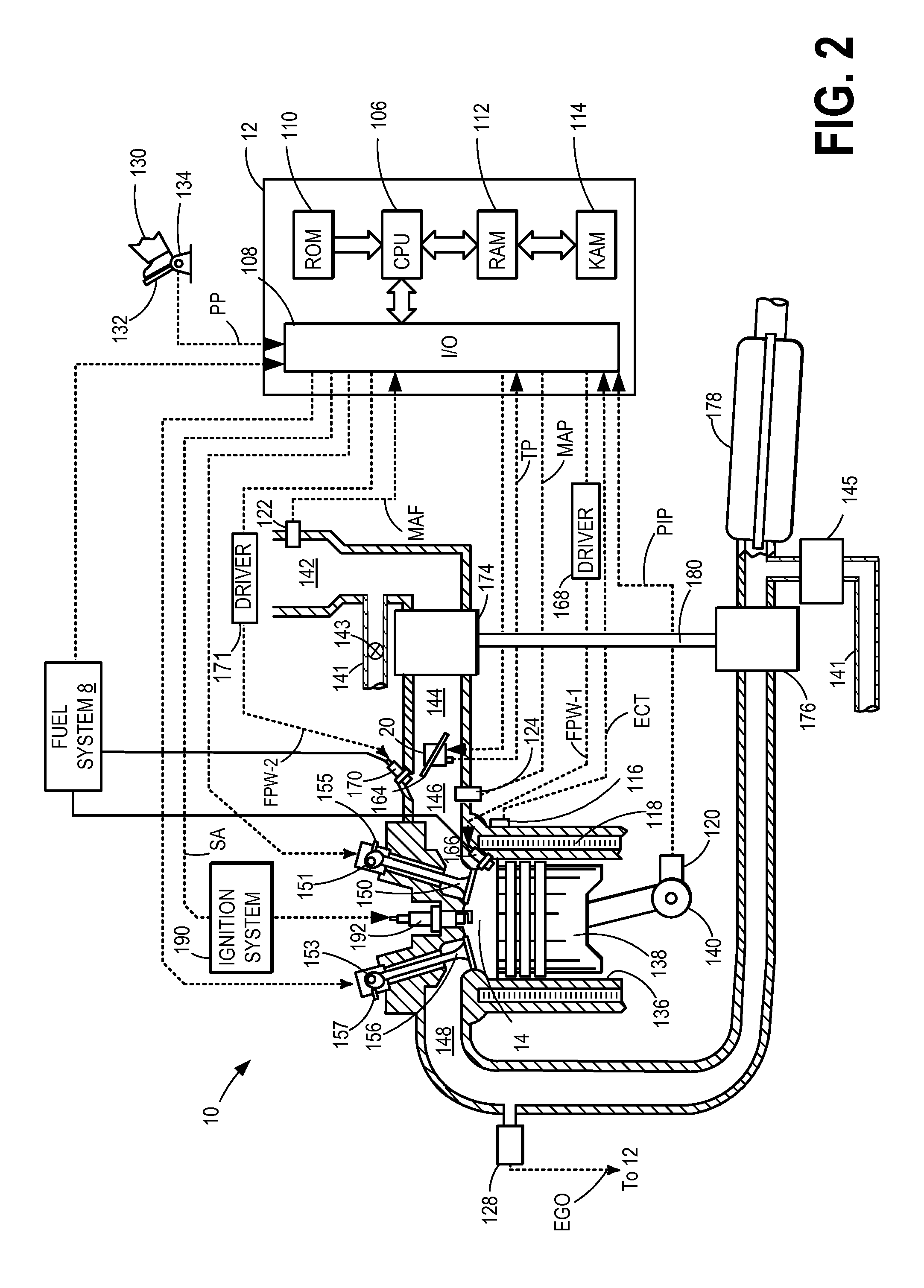Method and system for particulate matter control
a technology of particulate matter and control method, applied in the direction of electric control, speed sensing governor, machines/engines, etc., can solve the problems of increasing the number of increasing and increasing the number of times of reactivation. , to achieve the effect of reducing the number of times that cool cylinders have to be reactivated, reducing the probability of high pm emissions
- Summary
- Abstract
- Description
- Claims
- Application Information
AI Technical Summary
Benefits of technology
Problems solved by technology
Method used
Image
Examples
Embodiment Construction
[0015]Methods and systems are provided for adjusting a fuel injection profile when operating an engine configured for selective cylinder deactivation (herein also referred to as skip-fire operation), such as the engine system of FIGS. 1-2. A controller may adjust the skip-firing pattern selected responsive to cylinder deactivation conditions based on engine coolant temperature to reduce a soot load of the engine. Example cylinder deactivation patterns that may be applied in different engine configurations are shown at FIG. 3. A controller may be configured to perform a routine, such as the routine of FIG. 4, to select a cylinder deactivation pattern based on the soot load of the engine to maintain the engine warm during the deactivation and reduce the frequency of cool cylinder reactivation. The controller may be further configured to transiently shift cylinders being reactivated to late split fuel injection to further improve cylinder warming. In this way, particulate matter emissi...
PUM
 Login to View More
Login to View More Abstract
Description
Claims
Application Information
 Login to View More
Login to View More - R&D
- Intellectual Property
- Life Sciences
- Materials
- Tech Scout
- Unparalleled Data Quality
- Higher Quality Content
- 60% Fewer Hallucinations
Browse by: Latest US Patents, China's latest patents, Technical Efficacy Thesaurus, Application Domain, Technology Topic, Popular Technical Reports.
© 2025 PatSnap. All rights reserved.Legal|Privacy policy|Modern Slavery Act Transparency Statement|Sitemap|About US| Contact US: help@patsnap.com



